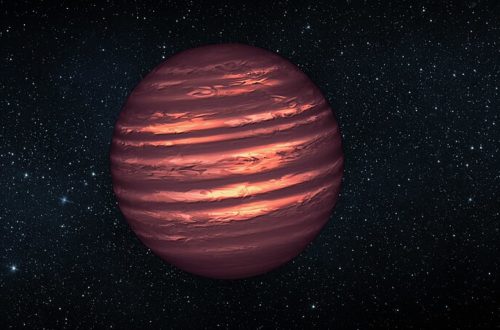How Are Spaceflight Inc.’s Sherpa Vehicles Improving Satellite Launch?

SpaceX made history in 2019 when it launched its first batch of Starlink satellites. Packing 60 CubeSats beneath the Falcon 9’s fairing cover, this first launch was the heaviest payload the company had ever attempted. Once released from the second stage of the rocket, each of these satellites had to make its own way to its predetermined orbit.
For tiny CubeSats like Starlink, which sit in a low earth orbit about 550 km above the earth’s surface, this isn’t as challenging as it might be for larger satellites that need to travel higher before they can settle into their orbit.
Traditionally, these satellites were simply strapped to larger rockets designed to push them into higher orbits, but this can be an incredible waste of fuel and resources. Even the reusable Falcon 9 can’t always make it back to the landing pad if it has to push to higher orbits.
However, Spaceflight Inc.’s Sherpa vehicles may help change that. So what are Sherpa vehicles, and how are they supporting satellite launches?
The Challenge of Launching
Space isn’t that far away. Travel 62 miles straight up, and you’ll be in orbit. On the ground, that distance would take you about an hour on the highway at 60 mph. However, getting into orbit is a bit more challenging because, in addition to having to travel that distance, you’re also fighting against Earth’s gravity, which is determined to keep you on the ground.
Most rockets don’t reach escape velocity, or the speed necessary to break free of a planet’s gravity. They don’t need to because they’re not trying to leave Earth behind, so they don’t need to travel at 11.2 km/s. Instead, they’re merely depositing satellites or astronauts in orbit above the planet before falling back into the atmosphere and burning up or, in the case of the Falcon 9 booster, landing on a drone ship in the Atlantic Ocean.
The problem is that the heavier your rocket, the more thrust it’s going to take to get it into orbit. And the higher it needs to go, the more fuel you’re going to need to pack into its tanks. Some strong and lightweight alloys can help cut down on rocket weight, but these enormous devices still weigh tens of thousands of pounds.
So, while the rocket does get lighter as it ascends, it still takes a tremendous amount of force to get a rocket into higher orbits because it’s burning fuel the entire way up.
Introducing Sherpa Vehicles
Sherpa vehicles may be the perfect stepping stone between rocket launches and the higher geostationary or geosynchronous orbits needed for some satellites. In addition, these unique devices work as a booster for satellites that may need to be a bit higher in the sky to function correctly.
These orbital insertion transfer vehicles are named after renowned mountaineers who live in the Himalayan mountains on the borders of Tibet and Nepal. You’ll often hear about mountain climbers hiring a sherpa to help guide them to the top of Mount Everest.
Spaceflight Inc.’s Sherpa vehicles take that love of heights a bit further, shepherding satellites to higher altitudes once they’re released from their booster rockets.
There are three planned versions of these orbital insertion vehicles: the Sherpa-FX, the Sherpa-LTC, and the Sherpa-LTE. There are currently 14 Sherpa-FX craft in orbit, launched in January 2021. Each device can carry out multiple deployments and transits and is designed to function for four to seven years before it requires repairs or replacement.
The Sherpa-LTC, dubbed “Go Fast,” is scheduled for its first launch sometime in the second half of 2021. These vehicles use a green propulsion system designed to provide rapid orbital transfer while still relying on a more sustainable fuel source. They’re currently tuned for Starlink satellites, capable of deploying multiple satellites at once after a low-orbit dropoff.
The Sherpa-LTE, on the other hand, has been dubbed “Go Far,” and will take us farther beyond the currently popular low earth orbit targets. The Sherpa-LTE is equipped with an Apollo Constellation Engine (ACE) that will help it move satellites to geosynchronous or cislunar orbits. It can even propel satellites into Earth-escape orbits, something that will be valuable for anything that we intend to send to the moon or Mars to support future missions to those destinations.
The Sherpa-LTE is tentatively scheduled for its first launch sometime in the middle of 2021.
From Here to the Moon
Right now, all eyes are turned toward the moon as NASA works toward the launch of the Artemis missions that will finally take us back to the lunar surface. With a short goal of 2024 fast approaching, these missions will need all the support they can get.
While there aren’t currently any plans for Spaceflight Inc. to work with NASA to support the Artemis missions — at least not that we’ve been told — these orbital insertion spacecraft could help provide additional support and get satellites or even pieces of the planned Gateway station into an Earth escape orbit, ready for capture and use on the Moon or in orbit around the satellite.
The potential applications for these devices are near limitless. Once we’re set up on the moon, the escape velocity drops from 11.2 km/s to 2.38 km/s, a mere fraction of what we’re working against here on Earth.
That’s why setting up a base on the dark side of the moon in the southern polar region is part of NASA’s plan. It gives them — and any other future space agencies or privatized space flight companies — a place to launch out into the rest of the solar system without having to work nearly as hard. From there, Sherpas could easily support orbital insertion missions to Mars and beyond.
With two more versions of the Sherpa vehicles planned for launch later this year, we imagine we’ll be seeing quite a bit more of these unique spacecraft in the coming months.
Looking Forward
Sending a rocket into orbit — even a relatively easy to achieve low-earth orbit — takes thousands of pounds of fuel and often millions of dollars to accomplish. While Spaceflight Inc.’s Sherpa vehicles won’t solve gravity, it can help reduce the amount of fuel and money we spend on these launches simply because their rockets won’t have to travel so high to accomplish the same task.
These Sherpas are the first of their kind, but as our species works to travel to the stars, they likely won’t be the last.
Would you like to receive similar articles by email?





